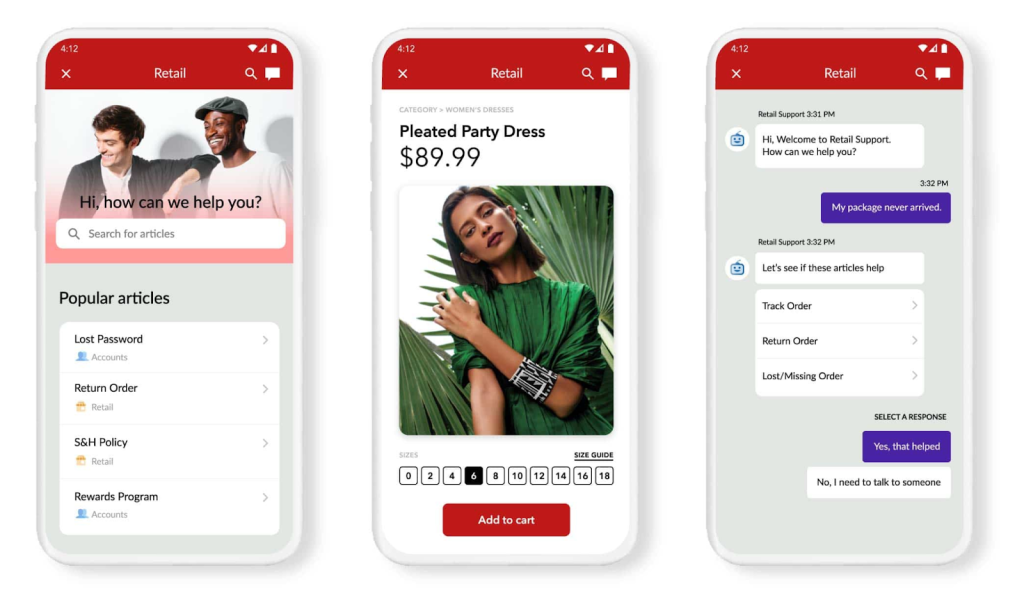Customer service management encompasses pretty much everything a brand does to serve customers in the best manner possible – within the constraints of the customer service budget. Whether customers need help obtaining product pricing and feature comparisons or assistance with returning a shipment, customer service management is core to the process. In a multi-channel world, most brands are using several channels to serve customers — including phone, email, social media, live-chat, and messaging.
Thanks to automation (such as chatbots and AI) in modern customer service platforms, brands can optimize customer service management across channels without straining the budget. Doing so involves a unified solution approach wherein brands meet consumers in the channels they prefer. Let’s take a closer look.
Select the best channels, not every channel
Many brands believe they need to meet the customer in every channel to provide robust customer service management. But that’s often not the case. For example, a brand may start out using email – only to find that they quickly face scalability issues. As agents sort through a clunky UI and ticket backlog, customer satisfaction drops because of a lack of live responses and slow turnaround times. The question is, “Why did that brand select email as a primary customer service channel in the first place?”
The first step in modern customer service management is to determine which channels your brand should be using to optimize customer service. To do this, identify the channel(s) where your customers prefer to raise their customer service issues. Then, evaluate those channels as the launch points for delivering a continuous, cross-channel dialogue that manages a consumer’s issue from start to finish in a way that is both convenient to them and realistic for you to deliver. The important thing is to choose the channels that enable the optimal blend of customer experience, agent experience, overall customer service excellence and operational efficiency.
The importance of a continuous, cross-channel dialogue in customer service management
Once you’ve chosen the most appropriate channels for your audience, the next step is to create a seamless experience that moves across channels. Not only does this maximize customer convenience, it gives you a complete picture of your customers and how they use your channels. Yet, some customer service leaders who hear mention of delivering a continuous dialogue across channels often jump to one negative assumption: “Cross-channel support requires complex technology integrations and is prohibitively expensive.” Fortunately, that is no longer true today.
The progression of automation in customer service has served to simplify multi-channel customer service management over the last few years. Automation makes it easy to deliver a single, continuous dialogue with a consumer, regardless of channel – even if the consumer switches back and forth between channels in the process. Here’s why:
Whether a customer launches a ticket with a live agent or via a digital channel, process automation can progress the conversation with the customer toward an efficient resolution. For example, assume a customer is engaged with a chatbot that collects the customer’s issue description and customer number. The bot can blend that data with other customer history data, and launch an automated process to progress the conversation to a chat with a live agent. However, if the issue is not urgent and the customer history indicates a preference for self-service, the bot can offer the next step to the customer via a knowledge base or further bot-driven interaction.
Cross-channel dialogue is a connected customer conversation
Here at Helpshift, our term for brands’ continuous dialogue with consumers across channels is ‘connected customer conversations’. These conversations are powered by chatbots that carry on a dialogue with consumers based on their current expressed needs as well as their history and recent activities with a brand, regardless of channel.
By connecting any channel (digital or otherwise), brands can deliver one continuous conversation with consumers. Customers can get support, instantly or at a cadence they prefer, knowing that every bit of information shared with a person or a bot follows them across channels, with their conversation history always available.
And maintaining a continuous dialogue with customers is extremely beneficial. One report says that more than 60% of consumers had to make multiple contacts to resolve their most recent customer service issues.
Conclusion: better customer service management saves the budget
In today’s highly digital world, 45% of consumers have no preference when it comes to interacting with either a live agent or a chatbot. If they can have their problems solved effectively and fast, it is all the same to them. So, harking back to my earlier point about selecting the best channels rather than every channel, you can see where the shift in consumer attitudes can spell some real cost savings. Brands can now direct customers towards those channels where they get the most efficient support. Since the combination of AI, bots and automation ensure that context carries from channel to channel, customers are happy to never waste time repeating themselves or starting over. As a result, Helpshift has found that selectively incorporating AI and automation into the customer service process makes it possible for organizations to automate over 50 percent of customer service interactions.
Want to learn more?
- Additional Product Information: Helpshift for Digital Customer Service
- Customer Service Glossary Article: What is Multichannel Support?
- Additional Product Information: Helpshift for Phone




